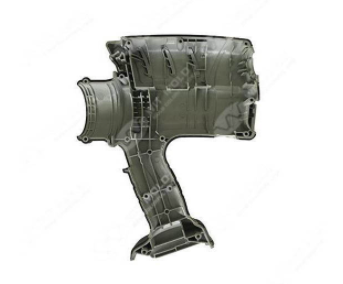Two-shot injection molding, also known as 2K molding or double injection molding, is a specialized manufacturing process that allows the production of complex, multi-material or multi-colored plastic parts in a single operation. This innovative technique offers several advantages and has its share of disadvantages. In this article, we will explore the pros and cons of two-shot injection molding to help you understand when and why it is employed in various industries.
Advantages of Two-Shot Injection Molding:
Enhanced Design Flexibility:
Two-shot molding enables the creation of intricate and multi-material designs that would be challenging or impossible to achieve with traditional single-shot injection molding. This flexibility opens up new possibilities in product design.
Improved Product Quality:
By combining different materials or colors in a single part, two-shot molding reduces the need for secondary assembly processes, leading to improved product quality and consistency. There are fewer chances for errors during assembly.
Cost Savings:
Despite the initial setup costs, two-shot molding can be cost-effective in the long run. It eliminates the need for additional processes such as adhesive bonding or mechanical assembly, reducing labor costs and enhancing production efficiency.
Enhanced Aesthetics:
This method allows for the integration of different colors and textures within a single component. This is especially valuable in industries where aesthetics play a critical role, such as consumer electronics or automotive interiors.
Reduced Cycle Times:
Two-shot molding can streamline production processes by eliminating the need to remove parts from molds and assemble them separately. This can result in shorter cycle times and increased productivity.
Disadvantages of Two-Shot Injection Molding:
Complex Process:
Two-shot molding requires specialized machinery and tooling, making it a more complex and expensive process to set up compared to traditional injection molding. Initial investments can be a barrier for some manufacturers.
Limited Material Compatibility:
Not all materials are compatible with two-shot molding. Material selection is crucial, and the materials must have similar melt temperatures to ensure successful bonding. This limitation can restrict material choices.
Tooling Maintenance:
The molds used in two-shot injection molding are more intricate and complex, requiring higher maintenance and potentially longer lead times for repairs or modifications.
Design Constraints:
Designing for two-shot molding can be challenging. Engineers need to consider material compatibility, flow characteristics, and the order of injection, which may impose design constraints.
Risk of Defects:
The potential for defects, such as material bleeding or delamination between the two materials, exists in two-shot molding. Proper process control and quality assurance measures are essential to mitigate these risks.
Conclusion
Two-shot injection molding is a powerful manufacturing technique that offers numerous advantages, such as design flexibility, improved product quality, cost savings, and enhanced aesthetics. However, it also comes with its own set of challenges, including higher initial costs, limited material compatibility, and design constraints. Whether two-shot injection molding is the right choice for a particular application depends on the specific requirements of the project and the trade-offs between its advantages and disadvantages. When used appropriately, it can be a valuable tool for creating complex and high-quality plastic components.


没有评论:
发表评论